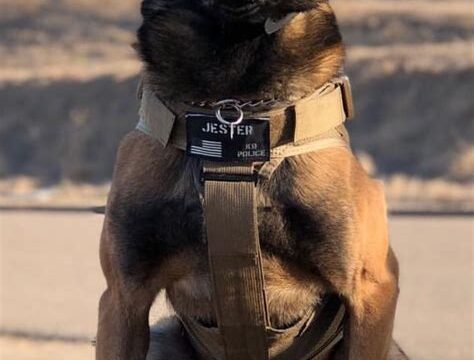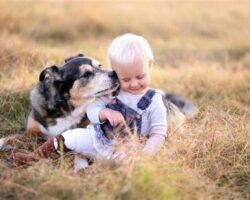Discover the top 5 military working dog breeds and learn about their training, health standards, specialized roles, bonding, and deployment challenges. Recognize their recognition and awards.
Top 5 Military Working Dog Breeds
Top 5 Military Working Dog Breeds
When it comes to military working dogs, certain breeds stand out for their exceptional qualities and abilities. These highly trained and reliable dogs play a crucial role in various military operations, from sniffing out explosives to patrolling alongside troops. Here are the top 5 military working dog breeds that are known for their remarkable skills and loyalty.
German Shepherd: Known for their intelligence, strength, and agility, German Shepherds are one of the most popular choices for military working dogs. They are highly trainable and excel in tasks such as search and rescue, tracking, and apprehension.
Belgian Malinois: Similar to German Shepherds, Belgian Malinois are prized for their work ethic and versatility. They are often used in special operations due to their keen sense of smell, speed, and fearless nature. Their compact size makes them agile and efficient in carrying out missions.
Training Requirements for Military Working Dogs
Training requirements for military working dogs are rigorous and demanding, as these dogs are expected to perform a wide range of tasks in challenging environments. One of the key requirements for military working dogs is obedience training. These dogs must be able to follow commands quickly and accurately, even in the midst of chaotic and stressful situations. This requires a high level of discipline and focus, as well as consistent training and reinforcement.
In addition to obedience training, military working dogs also undergo specialized training based on their intended roles. For example, dogs trained for explosive detection must undergo extensive scent training to be able to detect a wide range of explosive materials. Similarly, dogs trained for search and rescue missions must be trained in tracking and trailing techniques to locate missing persons in various terrains.
Physical fitness and endurance are also crucial training requirements for military working dogs. These dogs must be in peak physical condition to be able to perform their duties effectively. This means regular exercise, conditioning, and agility training to ensure that they are able to keep up with the demands of their work.
Specialized Roles for Military Working Dogs
The specialized roles that military working dogs (MWDs) play in serving their country are essential to the success of many military operations. These highly trained and loyal canines are utilized in a variety of specialized roles that require specific skills and abilities to carry out their duties effectively and efficiently. From explosive detection and patrol work to search and rescue missions, MWDs are an invaluable asset to military forces around the world. Their exceptional sense of smell, agility, and intelligence make them well-suited for these specialized roles, and they often make a significant impact in the defense and security of their respective countries.
One of the most well-known specialized roles for MWDs is explosive detection. These highly trained dogs are capable of detecting a wide range of explosives, including homemade devices and narcotics, making them an indispensable asset in combat zones and for security operations. Their keen sense of smell and ability to locate hidden or buried devices with precision have saved countless lives and helped to prevent potential threats. Additionally, MWDs are often used for patrol work, where they assist in securing perimeters and providing a visible deterrent to potential intruders or adversaries. Their presence alone can be enough to deter hostile actions and help maintain the safety and security of military installations and personnel.
Another specialized role for MWDs is in search and rescue missions. These highly trained dogs are able to locate and retrieve missing or injured individuals, even in challenging terrain or adverse conditions. Their agility, endurance, and keen sense of smell enable them to cover large areas quickly and effectively, often resulting in successful rescues and the recovery of individuals in need of assistance. Furthermore, MWDs are also utilized in specialized roles such as tracking, where their exceptional scent-tracking abilities are employed to locate and follow specific targets or individuals. This can be invaluable in locating fleeing suspects or locating individuals in need of assistance, even in high-stress or time-sensitive situations.
In conclusion, the specialized roles that military working dogs fulfill are crucial to the success of military operations and the safety of service members and civilians alike. From explosive detection and patrol work to search and rescue missions, MWDs play a vital role in defense and security efforts around the world. Their exceptional skills, intelligence, and unwavering loyalty make them an indispensable asset to military forces, and their contributions are rightfully recognized and valued within the military community. As such, the specialized roles for MWDs will continue to play a significant role in supporting military forces and enhancing their capabilities in a variety of operational environments.
Health and Fitness Standards for Military Working Dogs
Military working dogs play a crucial role in various operations, from handling security and explosive detection to search and rescue missions. As such, it’s important to ensure that these K9 soldiers are in peak physical condition to perform their duties effectively.
One of the key factors in maintaining the health and fitness of military working dogs is regular veterinary check-ups. These check-ups not only ensure that the dogs are free from any underlying health issues, but also help in identifying any potential problems early on. Additionally, it’s essential to provide the dogs with a balanced diet that meets their specific nutritional needs, as well as regular exercise to keep them physically fit.
Moreover, proper grooming and hygiene practices are also crucial for the overall well-being of military working dogs. Regular grooming helps in preventing skin issues, parasitic infestations, and other related problems. It’s important to pay attention to their dental health, nail care, and coat maintenance to ensure that they are always in top condition for their
Bonding and Partnership with Military Working Dogs
Building a strong bond and partnership with military working dogs is crucial for the success of their missions. When handlers and dogs have a deep connection, they are able to work together seamlessly and effectively. This trust and understanding is built through consistent training, regular exercise, and positive reinforcement.
Handlers spend countless hours with their dogs, forming a strong emotional bond that goes beyond just a working relationship. They rely on each other for safety and support, creating a unique partnership that is based on mutual trust and respect. This bond is essential for the success of their missions, as it allows the team to communicate effectively and anticipate each other’s actions.
Furthermore, the partnership between military working dogs and their handlers is crucial for their overall well-being. By maintaining a close relationship, handlers are able to identify any signs of stress, fatigue, or illness in their canine partners, ensuring that they receive the proper care and attention. This partnership is not only essential for the success of their missions, but also for the health and well-being of the dogs.
Deployment Challenges for Military Working Dogs
The deployment of military working dogs comes with its own set of challenges that must be carefully managed in order to ensure the success of missions and the well-being of the dogs themselves. One of the primary challenges faced by military working dogs during deployment is the physical and mental toll that the demanding and often high-stress environments can take on them. These dogs are expected to perform in a variety of terrains and climates, from harsh deserts to dense jungles, and must be prepared to work in extreme conditions for extended periods of time.
Another significant challenge for military working dogs during deployment is the potential exposure to hazards such as explosives, chemicals, and other dangerous substances. These dogs are trained to detect and alert their handlers to the presence of these threats, putting them at risk of injury or illness. Additionally, the high-paced and unpredictable nature of combat and security operations can create stressful and potentially dangerous situations for the dogs, requiring strong leadership and careful monitoring to ensure their safety.
Furthermore, the logistical challenges of deploying and sustaining a canine force in a military setting can also be significant. This includes providing appropriate transportation, housing, and medical care for the dogs, as well as ensuring that their handlers are well-trained and equipped to support them in the field. In many cases, military working dogs are required to adapt to rapidly changing circumstances and environments, further testing their resilience and adaptability during deployment.
Recognition and Awards for Military Working Dogs
Military working dogs (MWDs) play a vital role in serving and protecting our country. These highly trained canines work alongside their human counterparts in a variety of specialized roles, such as explosive detection, patrol, and search and rescue. Due to their invaluable contributions, it’s important to recognize and honor the efforts of these brave and loyal animals.
One way to show appreciation for MWDs is through the presentation of awards and commendations. These honors acknowledge the exceptional skills, dedication, and bravery demonstrated by these working dogs in the line of duty. Some of the most prestigious awards for military working dogs include the K-9 Medal of Courage, the Military Working Dog Service Award, and the K-9 Medal of Valor.
In addition to awards, recognition for MWDs can also come in the form of public acknowledgment and appreciation. This can include ceremonies, events, and media coverage that highlight the important role that these canine heroes play in keeping our communities safe. It’s essential to honor and celebrate the contributions of these remarkable animals, as they truly are unsung heroes of the military.
Frequently Asked Questions
What are some of the best military working dog breeds?
Some of the best military working dog breeds include Belgian Malinois, German Shepherd, Dutch Shepherd, and Labrador Retriever.
What characteristics make a breed suitable for military work?
Breed suitable for military work are typically intelligent, trainable, agile, and have a strong work ethic.
How are military working dogs trained?
Military working dogs are trained through a rigorous program that includes obedience training, scent detection, and tactical skills.
What roles do military working dogs typically perform?
Military working dogs often perform roles such as patrol, explosive detection, search and rescue, and security.
Are certain breeds better suited for specific tasks?
Yes, certain breeds are better suited for specific tasks. For example, Belgian Malinois and German Shepherds are often used for patrol and apprehension, while Labrador Retrievers are commonly used for detection work.
What is the lifespan of a military working dog?
The average lifespan of a military working dog is around 10-12 years, depending on factors such as breed and health.
How are military working dogs cared for when they retire?
When military working dogs retire, they are often adopted by their handlers or by loving families. They receive medical care and support through various retirement programs.





